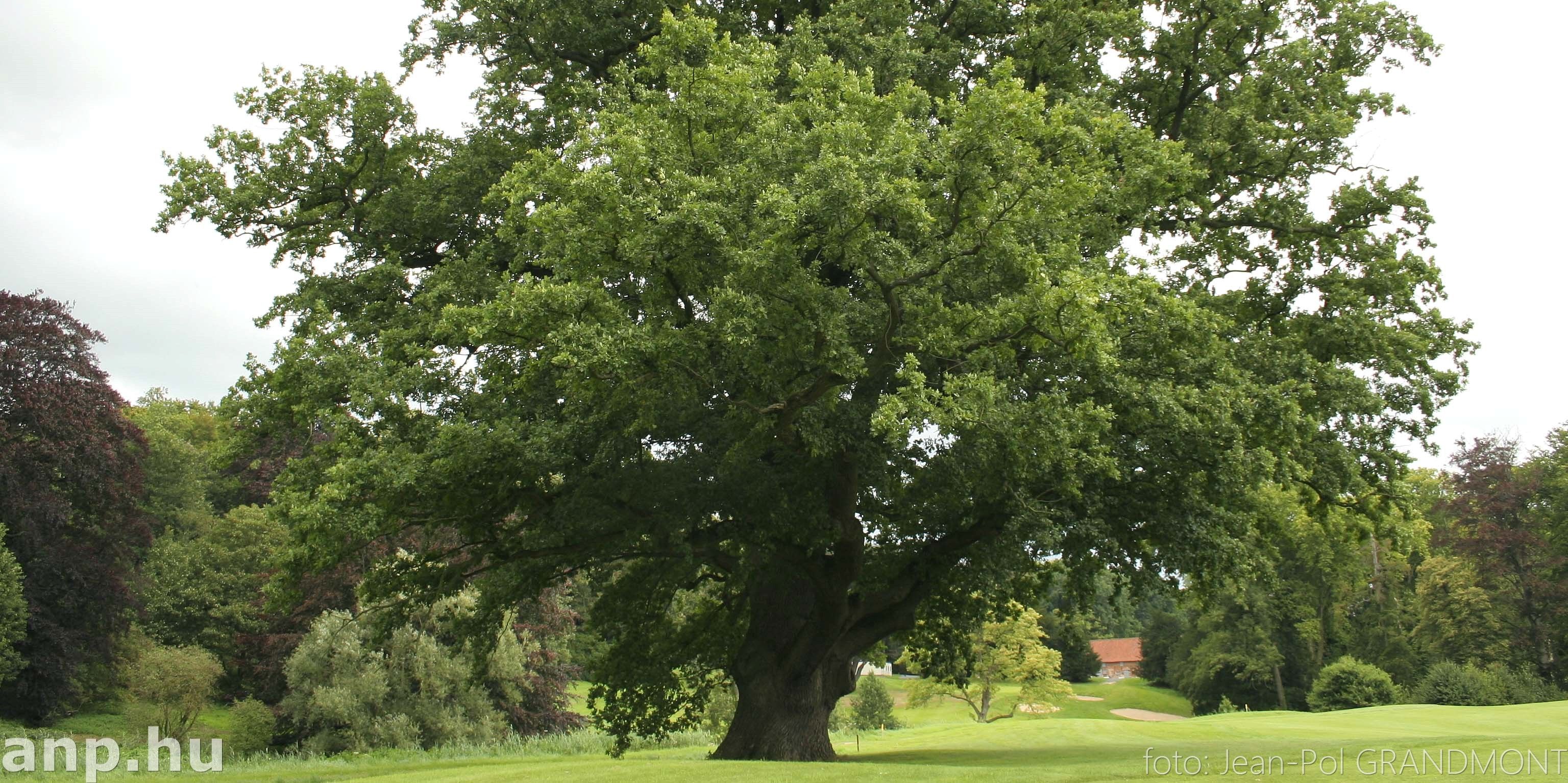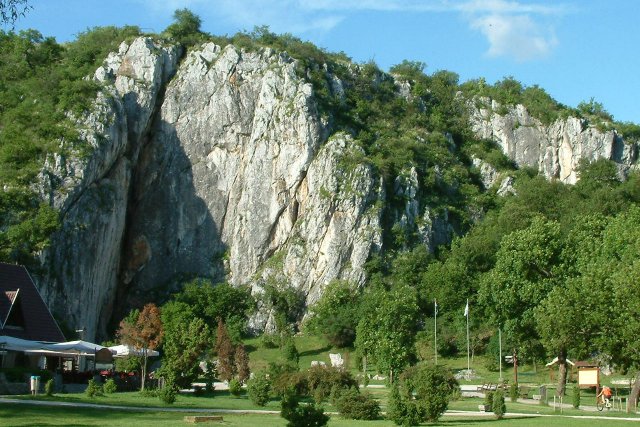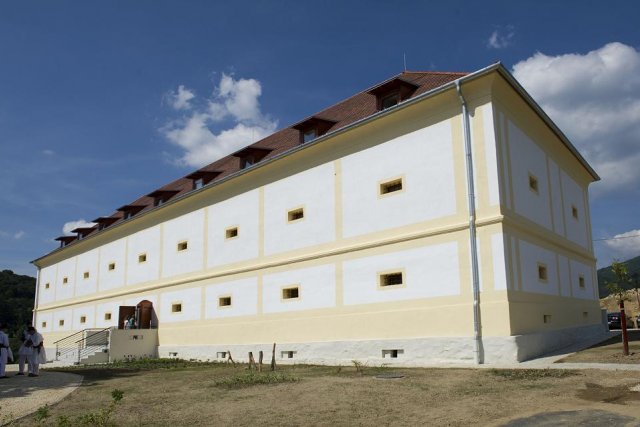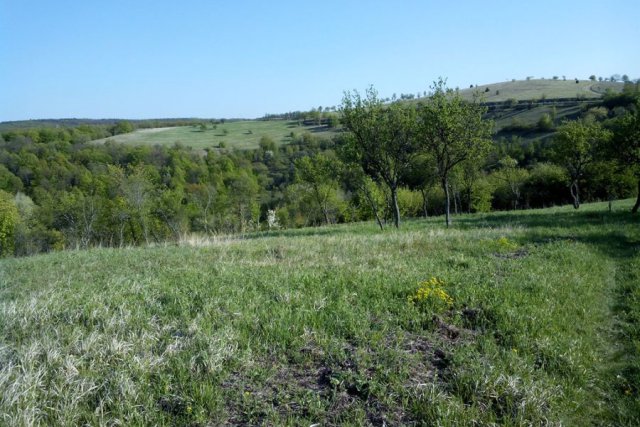
Hungarians have long respected the English oak. As they conquered their way west over the wooded steppes through the Carpathian Basin, the species was a common sight. Its great height, span of its trunk, spreading crown and thick branches came to symbolise a Methusian long life and the gods of heaven. It is no surprise that the tree’s Latin scientific name is Qurecus robur, meaning strength, hardness and solidity. Based on the popular vote taken by the Hungarian National Forestry Association www.oee.hu , the English oak was selected as 2015’s Tree of the Year. It is hoped that the increased attention brought by the award will assist ongoing forest industry research. Presentations and dissemination of information through forestry school programmes will highlight this topic. More information is available here www.azevfaja.hu
There are a few large examples within Aggtelek National Park and the Zemplén Nature Reserve.
The old oak at Aranyos-tető near the town of Ragály is nearly 400 years old. Interestingly, the entire area was cleared in 1922 and the oak only survived because the woodcutter did not have a saw big enough to handle the job. The trunk’s circumference is about 640 cm.
In the Cserehát, in the vicinity of Ziliz there is an English oak of Methuselahn age – estimated to be almost 1000 years old. A lightning strike ten years ago stripped it of many of its branches, but it still sends out new foliage every spring. It is believed that Rákóczi II once tethered his horse to this tree.
Last but not least, there is a significant English oak not far from Kelemér, on the shore of the moss lakes. The so-called “Kisasszonyfa,” or “Damsel Tree” is 300 years old and nearly 2 meters in diameter. It is said to have gotten its name in honour of Miss Piroska, a one-time inhabitant of the nearby Mossy Castle. The alternative legend comes from Dr. István Faggyas, a native born ethnographer from Kelemér. Faggyas suggests that the locals believed that swamp fairies or marsh damsels sat on the tree’s widespread horizontal branches where they spent their time weaving. If you want to see more, please visit this village, where you can learn the full story on a guided tour.
More typically found on the plains than in the mountains, the English oak covers the most extensive area among the 24 species of oak found on the European continent. The species began broadly extend its range following the last ice age, reaching from the Iberian Peninsula, to the Apennines to the Balkan Peninsula with the help of squirrels, jays and mankind. Today, the species can be found from Great Britain to the Urals.
The trees can reach 40 meters in height on average, and have been known to grow to 50 meters. The largest measured trunk diameter, 14.75 m, has been measured in the Swedish town of Kville. The longest living specimen can be found in Jægerspris Nordskov, Denmark – 1500-2000 years old. However, in Hungary, large specimens have been scarce. Botanist Lajos Simonka found an English oak in Nagyhalász in 1871 measuring 30 meters in height, a 14 meter diameter trunk was identified in Zsennye, and a 10.2 meter diameter English oak stump was found not long ago. The tree beside the 14th century church in Hédervár is perhaps the oldest living specimen in Hungary, thought to be 700 years old.
If one looks at a leaf from above, one will see a distinctive star-like pattern formed by the veins and ribs. This is known as the “forester’s star,” and is the symbol of the Forestry Service.
The tough, hardy English oak has been utilised in a number of ways and has been an important material for the shipbuilding and cooper industries, as well as the construction of bridges, locks, railway sleepers and houses, and these days, primarily timber. The density of the wood has meant that it characteristically resists deterioration well if buried or submerged for long lengths of time. Its acorns are an important supply of food for animals over the winter.
Centuries of deforestation, river control and drainage has caused extensive population loss. Legendary giants of the species are long gone.
Voting for the European Tree of the Year continues until February 28th. Hungary’s entry is a Sycamore tree in Tata. Vote here www.treeoftheyear.org
For more information: Mr. Gergely Lomniczi
Országos Erdészeti Egyesület
06 20 984 6134
fotitkar@oee.hu
Source: http://www.azevfaja.hu/2015/sajtoanyag_kocsanyos_tolgy



